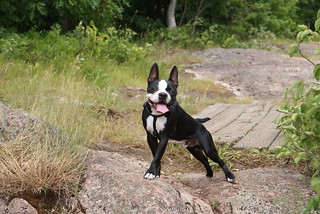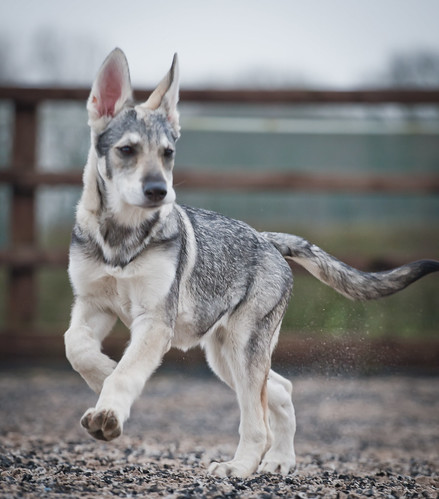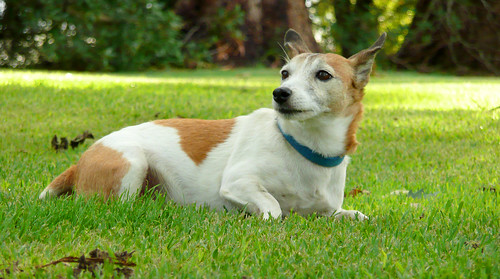This article I am writing from personal experience. My wife and I were both working when we got Buddy who was 10 weeks at the time. We rescued him from the shelter after he had been to another family for only a week. He came with a certificate to Obedience school as he qualified for training based on the experience the previous family had with him. We successfully trained Buddy to be a perfect dog in all situations. This is written based on my experience and tips that helped us succeed and that will hopefully help you as well.
Since you are reading this article you’ve already come to the realization that you need to train your dog. It is never too late to train your dog, it may just take longer to break old habits the older they are. You probably also work enough hours a week to make this task seem impossible but it is not. My wife and I were able to do it and so can you.
The first week we got Buddy we were on vacation so we did have a leg up on crate training and house breaking over those that can not take the time off. If you are able to take a week off for the first week you have your new dog it will be invaluable in the long run. In this first week you’ll want to house train them and start crate training. These two go hand in hand as you will discover further in the article. Ideally you should be able to take your dog out in regular intervals while you are house training them but because of work schedules we know this can be a daunting task. I’ll discuss some alternatives you can use while at work.
As a puppy take them out every 30 minutes when you are home to “do their business”. When you are bringing them out mark the task at hand. Take them outside on a leash to a part of your yard (or where every they will be permitted to go to the bathroom). Mark the behaviour by saying “Do your business” in a calm but firm voice. Once they relieve themselves give them praise and say “Good Boy or Good Girl” in a praising voice. Clean up any poop as a responsible dog owner. Once inside you may give them a treat on occasion. You shouldn’t be using treats to get them to go to the bathroom where you want them too.
Increase the time between bathroom outings while you are home until they can go for at least a couple hours.
Lastly at night limit their water – remove it at night an hour before they will go out for the last time during the night. And only leave a small bowl during the day if any. This will lessen the need to go to the bathroom. Make sure though when you are home they get plenty of water. Also limit treats at night before they go to bed if you can. Think like you – if you drink a lot of water or eat foods right before bed you will most likely be waking up to go to the bathroom. The dog will behave the same at night and during the day.
Larger dogs will be able to hold it for up to 10 hours while smaller dogs usually can only hold it four. When an accident does happen don’t scold them, just take them right outside when you notice the mistake. If you find yourself needing to be gone longer than they can hold it find someone to take them out. There are plenty of dog walkers around that will charge a small fee to walk your dog on a daily basis. There are other aids such as indoor dog training pads where you can train your dog to use that pad for relieving themselves. They are designed to collect the waste for you to throw out. However be warned using these could train your dog that they don’t have to wait to go outside. Resort to these only in extreme cases.
Most important, crate train your dog. This is easy to do while you are working during the day. Put your dog in a properly sized crate during the day and at night when you sleep. The crate must be sized so that your dog can comfortably move around but not so much room that they can create a bathroom space in it. Dogs are clean animals and will do whatever they can to not soil the space they live in. If the crate is too large the dog can use a corner of it just to go to the bathroom where he won’t have to lay in it.
Your dog will make strange noises and barks to try to get out of the crate, and by try to get out I mean guilt you into letting them out. You can train this out of them by waiting for them to be quiet for 10 seconds – once they are let them out. Praise them say “Good Quiet” and after a short time put them back in the crate. Now wait 20 seconds and do the same thing. Keep doubling this in the same training period until they no longer cry to get out. You can do this in sessions – where you set goals, 1 minute for the first training session and maybe 3 minutes for the second training session. You should be able to use your crate to put your dog in a safe place during emergencies or when you can’t be constantly watching them. You can find more indepth articles on crate training that will explain this further. Never use a shock collar! And never yell at them while they are being training. Yelling just tells the dog that they can make more noise and is counter productive.
These two training techniques will be the key to being able to train your puppy while working full time. Training other behaviors is less time intensive and can be accomplished by attending a local Dog Obedience school. So lets discuss that part of training your dog while still working full time. There are two avenues, getting do it yourself dog training books and videos or going to a dog training class. I suggest going to a dog training class that fits in your schedule. Usually they are on weekends or after work and occur once or twice a week. The class will be training you as well and this is why I recommend doing a class and not a do it yourself book.
After work each day spend 30 minutes reinforcing that weeks training techniques using a quality treat that your dog doesn’t get any other time but loves. I used hot dog pieces which I found worked really well. These are the same treats that you use in your training classes. Your instructor should open the class with a discussion on the importance of praise and treats during training. The use of positive reinforcement training is the only way there is. Any other training technique is counterproductive.
Lastly you have to be consistent. Use the same words when training your dog at all times and also use the same tone. Speaking a command over and over again is training your dog to wait for the command to be said four times to do what you ask. Your instructor should go over this. Also you shouldn’t need to raise your voice. If there are two of you training your dog use the same commands as well. You should have one “master” in the household. If the dog sees that there is a power struggle between the two of you he or she will think that they have an opportunity to become the alpha dog in the pack.
I only touched briefly upon that techniques that worked for us with emphasis on the crate and house training as those are the two most important trainings to get down first while training your dog and working full time. In fact any dog should be trained those two things first no matter what the household situation is. You can find more information on the training techniques on my blog or the internet. If you have questions feel free to contact me through my blog in the link below. We went through three training classes; “Beginner Obedience”,”Intermediate Obedience” and “Come when called”. The latter we decided to go to because Buddy wasn’t coming when called. He is a perfectly behaved dog now and we love him very much.
Sean is a passionate dog owner and has created [http://www.howtotrainyourdogblog.com] for other dog owners to aid them in training their new family member. Follow Sean on Twitter http://www.twitter.com/dogtrainblog. Sean is always looking for new topics to write about. Send him a message on Twitter or through the website.
Article Source: http://EzineArticles.com/expert/Sean_P_Hussey/750040







